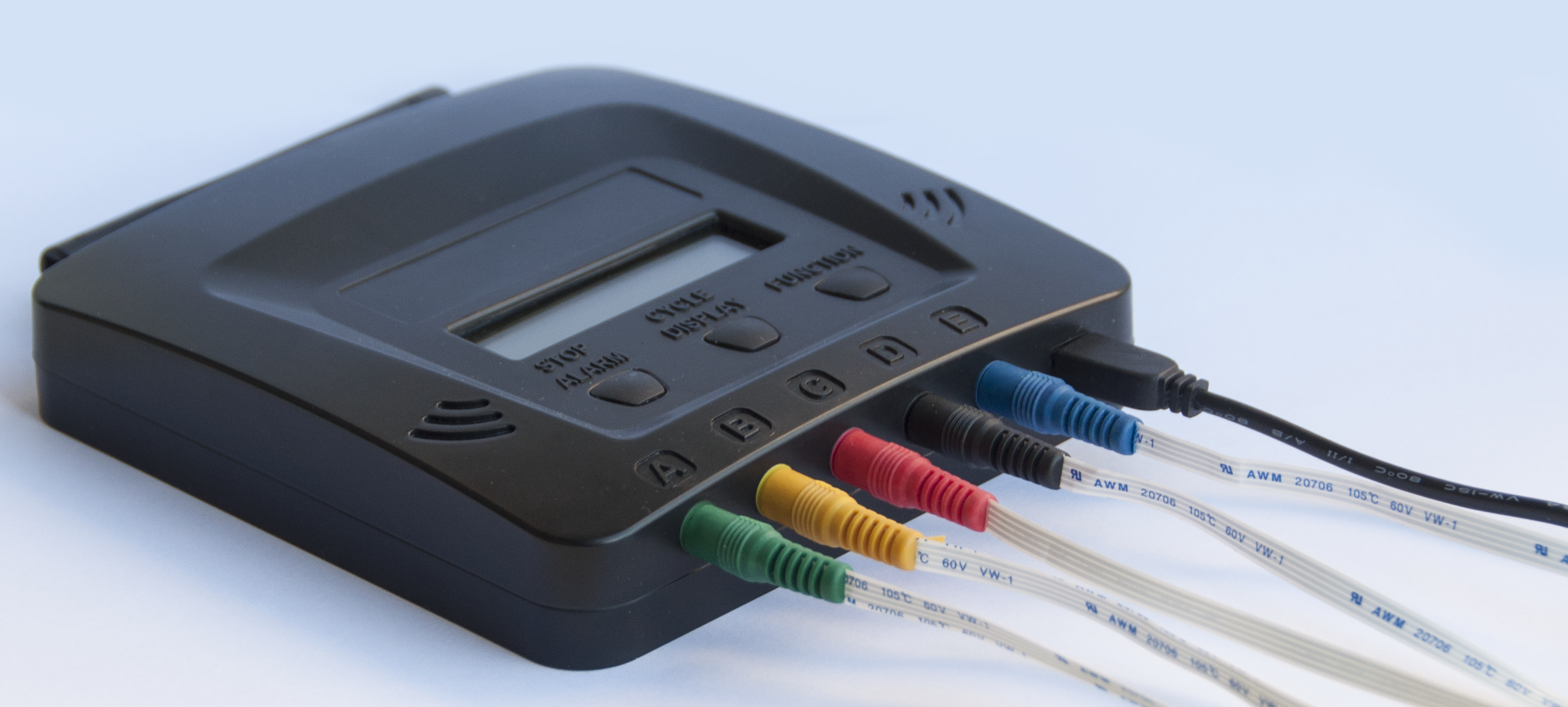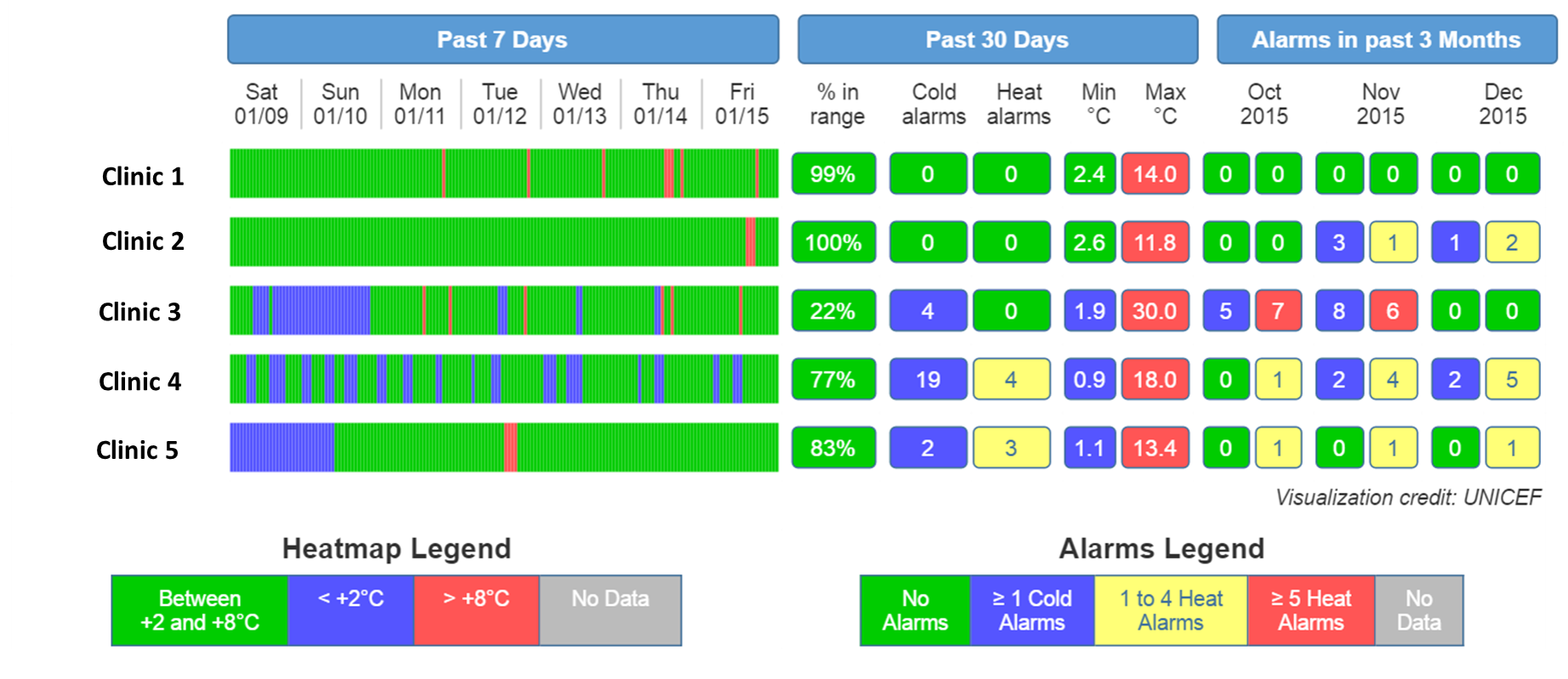 Photo of a ColdTrace device
Photo of a ColdTrace device
Many remote temperature monitoring products with 1-2 sensors linked to a central temperature recording unit with alarm systems have been piloted at district level and in single refrigerator storage sites in Haiti, Mozambique, Kenya, Albania, Nigeria and India. Some of them are hand-held while others are mounted externally. They provide SMS alerts for temperature excursions, and simple data reports on a real-time dashboard. Some of these cheaper devices are in the process of being pre-qualified by WHO. They now include better data visualization and device calibration traceability.
RTMDs remotely provide useful evidence on the functioning status of refrigerators. The analysis of the temperature graphs produced by the RTM devices enables technicians to recognize patterns in the graphs and to remotely provide an accurate diagnosis of the most common fridge issues: thermostat needing adjustment, solar panels needing cleaning and even solar batteries needing replacement. The technicians can then call the clinic staff and suggest appropriate corrective measures, such as adjusting the thermostat, cleaning the solar panel or pass the information for ordering new solar battery. This can accelerate the process and save money (on transport, time, per diem). Technicians are only sent on site to the clinics experiencing issues when they are not able to identify the problem.
The graph below shows an example of organising the data for analysis in RTM visualisation.

Source: ColdTrace, data visualisation
Installation of such devices is very simple and could theoretically be performed by nurses at HF. Some of these products are wireless and do not require any installation, however that might lead to a risk of theft.
The market is constantly evolving and new products are being introduced. A new generation of 30DTR devices has been released integrating a remote temperature monitoring system, based on GSM/GPRS connectivity that can send data to a web-based system and parameters can be modified through a mobile phone. The back-end SAP/Logistimo system (similar to LMIS inventory system) can read/accept its SMS/mails. It runs on power but uses a battery as backup.
RTM has been used very successfully in temperature studies to gather evidence on the benefits of tight temperature surveillance, through either 30DTR + SMS or RTM, as opposed to using stem thermometers and paper charts only. Examples of temperature monitoring studies are provided in the related resources. It showed significant reduction in the fridge downtime when a systematic temperature monitoring was organized.
However RTM for health facilities has only been piloted in relatively small projects and there is still a need for more studies and documentation on its deployment. For scaling up, the challenge is the need to mass-process a lot of data, to create multi-level dashboards and the management of the many SIM cards. One of the largest RTM projects in terms of numbers of units starts in India who just ordered 15.000 units and this will bring new evidence on large-scale deployments.
Related resources
| Title | Author | Year | Type | Language |
|---|---|---|---|---|
| Temperature Monitoring for Vaccine Quality | PATH, World Health Organization (WHO) | 2012 | Case study | English, French |
| WHY FRIDGES FAIL PART 2: RTM Data for Maintenance | Mozambique Ministry of Health, Nexleaf Analytics, VillageReach | Guidance | English |
